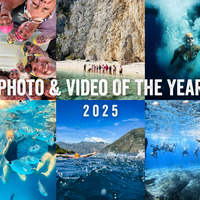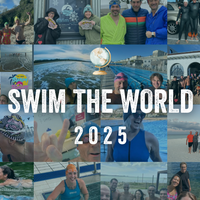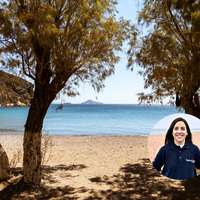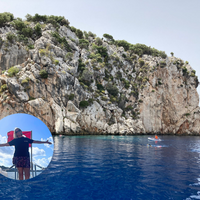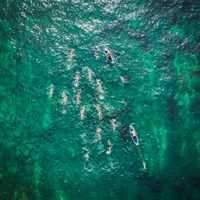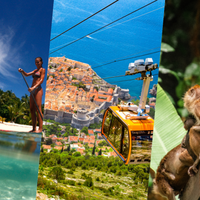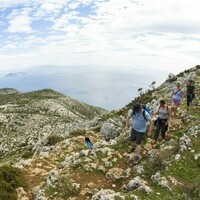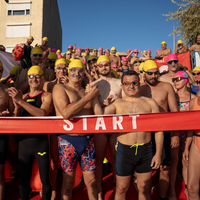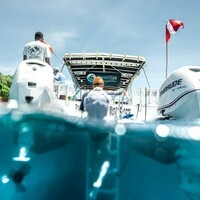We’re often asked about the Perfect Swimmer's Wetsuit – an all-purpose armour to avoid chafing and stroke restriction, which is thin and flexible, but still retains heat. The truth is, wetsuits are made for all conditions, temperatures and seasons. And so, while you won’t find a single suit for all uses or environments, you will find a selection of highly functional brands and enough variety to prepare you for anything.
SwimTrek takes swimmers to all corners of the globe, from the Galapagos Islands to the Isles of Scilly. We dive into all waters: seas, rivers, lochs, tarns, lakes. We see wetsuits of all kinds, and, as conditions change, so to do the styles of neoprene on display. Thicker suits emerge for longer swims and colder waters. Thinner, more triathlon-specific suits are pulled out for shorter races. Discussions bounce back and forth about everything from the best shoulder material to neck band strangulation.
When you join a SwimTrek adventure, you could be meeting water upwards of 25C+ in places like Vietnam or the Philippines where you’ll boil in a full wetsuit. We also run expedition trips across the UK to places like the Isles of Scilly and the Lake District – they’re much colder and a wetsuit is a good choice!
It’s our policy to always give you the option to choose whether or not you want to wear a wetsuit. However, if going skins isn’t your bag, we hope this Wetsuit Buyer’s Guide will be of use, helping you to find the armour you need to tackle open water.

Key Things To Look For
Fit: How can you tell if it fits? Wetsuits are supposed to feel tight. Comfort is an instant secondary factor to that primary function: it needs to keep you warm. So, to test your suit, ask yourself if it feels tight, but without constriction. Dress-up definitely shouldn't be painful. Your movement shouldn't be too limited either. You should be able to extend your arms above your head, or squat if you need to. Neoprene also expands when wet so your suit will grow for comfort as you swim. The higher-end wetsuits are designed to utilise this fact, without any air space - like a second skin - and so they can feel difficult to put on. Too loose and too much water will seep in.
Material: Almost all wetsuits owe their elasticity to that superhero fabric called neoprene. A fabric that confers both buoyancy and warmth, this synthetic rubber has thousands of little air pockets and provides insulation to conserve your body heat. Arguably, the highest quality is Yamamoto Neoprene, produced in a small Japanese factory. They use a super thin neoprene (it can get as thin as 1.5mm) manufactured using limestone sourced from the local mountains, which makes for better buoyancy and heat retention. Orca is one example of a brand that integrates this material into their highest-end designs.
Construction: Here are the little details that make the difference. Check the cuff, collars, seams and zipper. Loose collars can lead to painful neck rashes. Flat locked seams are important too as they reduce chafing during longer stints in the water. Weak seam construction could eventually leave your suit looking like you've tousled with a leviathan.
Flexibility: Ability of movement is an essential consideration when it comes to buying a wetsuit. You need to be able to extend your stokes fully, with as little restriction as possible. You might even need to sacrifice a few of those warmer extra millimetres, if you want to move faster in the water. Test your suit on dry land before you leap into open water. Go through your stroke motions. Can you extend your limbs as you usually would? If the suit is too tight it could lead to muscular injuries, particularly in your shoulders, as well as chafing and other irritations. With this in mind, sleeveless suits can be great if you want to retain full arm movement.
Buoyancy: The float test. This factor really depends on the kind of swimming you're doing. Special fabric panels appear in many suits for added buoyancy, especially around your backside or lower back. Wetsuit brands like BlueSeventy incorporate both neutral and positive buoyancy into their suits. If you go for a neutrally-buoyant design it's likely to be a sleeker suit with any added fat burned off. These suits minimise drag and assist faster swimming. Whereas positively-buoyant suits can assist swim posture and are great if you're honing your technique, with additional floatation panels around the calf, lower body and backside.
Price: It's very important to get value for money, but not to scrimp too much if you want a suitable level of performance for endurance swimming. Mid-level suits tend to be the most popular. Entry-level suits start around £100, with very basic design, and then range up to the high-end constructions - getting up to around £500.
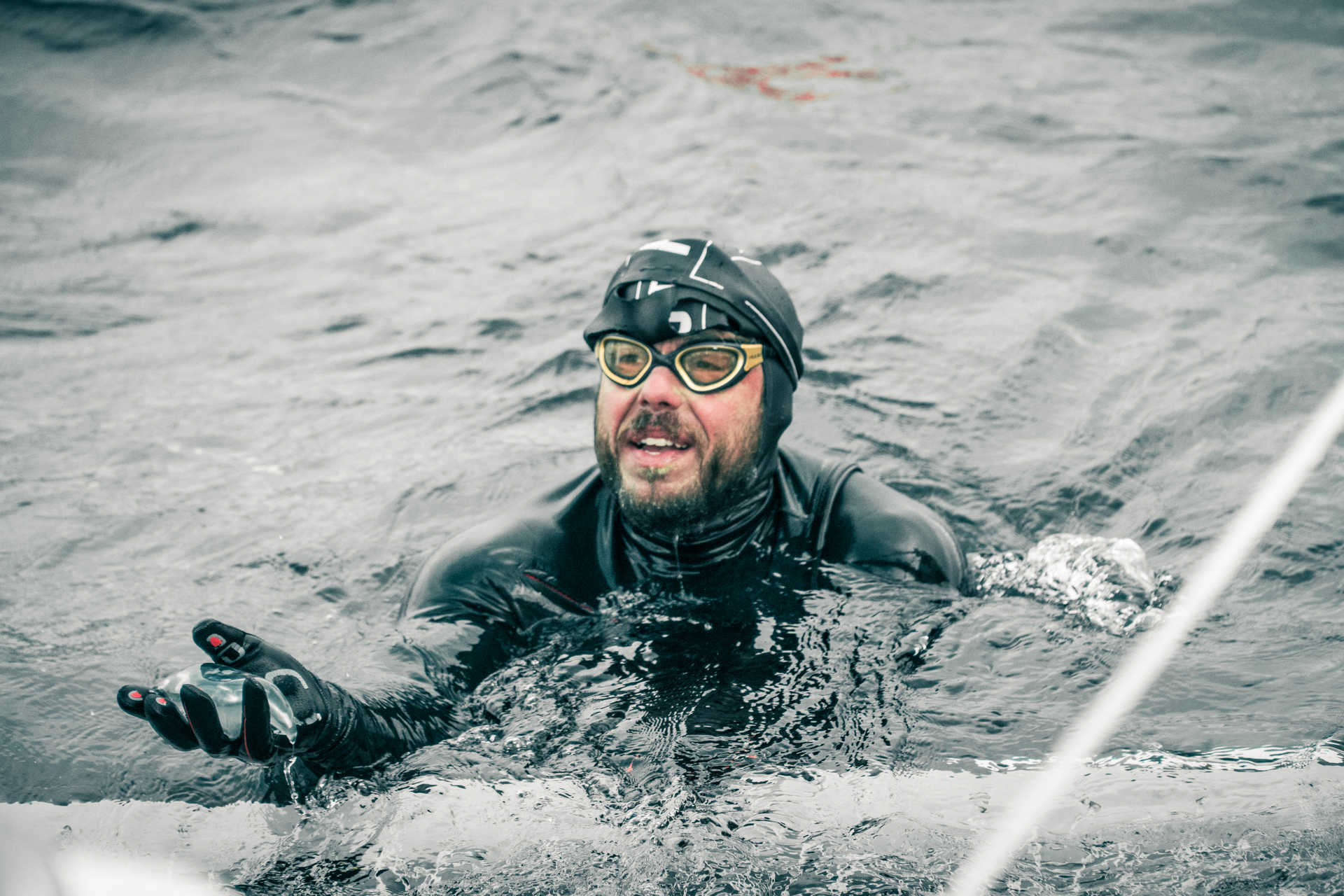
Generally, wetsuits fall into three main categories: surf, open water or triathlon. Variations in length and styles range from full suit to sleeveless or shorty suits. Tightness and thickness vary around the chest, waist and knees. While seams and panels are also cleverly adjusted and refined for the best possible flexibility.
Below we’ve outlined the key differences and the swimming conditions for each kind. We’ve also included a small selection of links to brands and models of wetsuit to check out. Just keep in mind prices are subject to change!

Sleeveless Wetsuits
Tropical waters can reach heated pool levels of around 26C (79F+) – we’re talking about Caribbean coastal swims and dips during a Middle Eastern summer. Overheating becomes an issue and anything more than a sleeveless suit is usually unnecessary. Water temperatures across the Mediterranean can ripple between 22-25C (72-77F), which can be cold enough for thin, longer length wetsuits.
Here are a few options to check out:

Summer Wetsuit
During summer water temperatures across the UK fluctuate between 17-21C (63-70F). Then out come those lightweight suits with flexible 3mm neoprene, varying sleeve lengths and panels positioned cleverly for less inhibited movement.
Here are a few options to check out:
- Alpkit Terrapin Wetsuit £79
- Orca Open Water Sleeveless £179
- Zone3 Advance Wetsuit £179
- Selkie Wraith Tekniikka Wetsuit £190
- Roka: Men’s Maverick Comp 2 Sleeveless £265
- 2XU Propel Pro Wetsuit £600

Autumn Wetsuit
Temperatures around 12-16C (54-61F) start to call for warmer wetsuits. Summer drifts into recent memory and fleece interiors and thick neoprene panels start to appear. It’s possible to acclimatise to these cooler waters if you keep swimming skins. Though this is often only advisable if you’re pushing to an upcoming challenge, or if you’re a more experienced swimmer. In fact, sub-16C water is the marker used for qualifying times for channel swims and other long distance events.
Here are a few options to check out:

Winter Wetsuit
When you hit the post-autumn single digits, around 6-11C (43-52F), you’ll need a much thicker wetsuit, around 5mm. You’ll gain buoyancy, but will likely find your stroke rate is restricted and a little slower.
Here are a few options to check out:
Ice Swimmer Accessories
Temperatures around 1-5C (34-41F) are very punishing for swimmers. In fact, any water under 5C is the territory of ice swimmers – the temperature required during skins training for an Ice Km or Ice Mile. Much shorter swim times around 10 minutes are advised, unless you’re fully acclimatised. Gloves and neoprene hats are also important to keep the feeling in your extremities.
Here are a few options to check out:

Survival Layers
When the waters drop below 0C (32F), sub zero temperatures necessitate very short dips and extreme acclimatisation. Extra base layers can be worn beneath your wetsuit to retain more heat.
- Zone3 Under Wetsuit Long Sleeve Baselayer £59
If you’d like to learn more about the right wetsuit for your needs, explore our wetsuit review with the Outdoor Swimming Society: The Great Wetsuit Test




